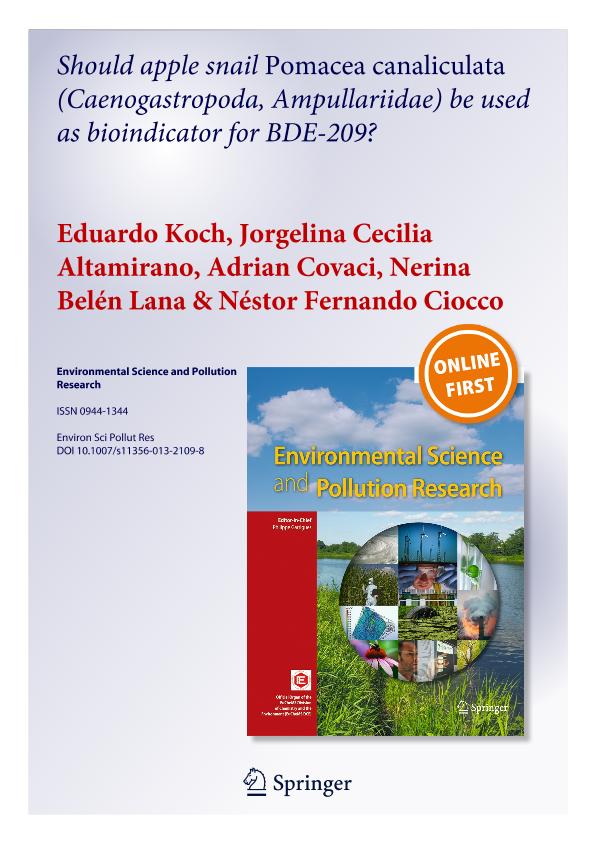Artículo
Should apple snail Pomacea canaliculata (Caenogastropoda, Ampullariidae) be used as bioindicator for BDE-209?
Koch, Eduardo ; Altamirano, Jorgelina Cecilia
; Altamirano, Jorgelina Cecilia ; Covaci, Adrián; Lana, Nerina Belén
; Covaci, Adrián; Lana, Nerina Belén ; Ciocco, Nestor Fernando
; Ciocco, Nestor Fernando
 ; Altamirano, Jorgelina Cecilia
; Altamirano, Jorgelina Cecilia ; Covaci, Adrián; Lana, Nerina Belén
; Covaci, Adrián; Lana, Nerina Belén ; Ciocco, Nestor Fernando
; Ciocco, Nestor Fernando
Fecha de publicación:
01/2014
Editorial:
Springer Heidelberg
Revista:
Environmental Science And Pollution Research
ISSN:
0944-1344
Idioma:
Inglés
Tipo de recurso:
Artículo publicado
Clasificación temática:
Resumen
Apple snail Pomacea canaliculata has been reported to accumulate polybrominated diphenyl ethers (PBDEs) and was recently proposed as PBDE bioindicator. This work investigates the ability of P. canaliculata to accumulate BDE-209 by dietary exposure under controlled experimental conditions. A 30-day long enrichment feeding assay was carried out using 30 adult apple snails, placed in individual aquaria. Food was enriched at three BDE-209 concentrations (400, 4,700, and 8,300 μg g−1 lipid weight). Correlation between BDE-209 values in food and snail tissue were estimated according to Stockholm Convention suggested criteria for chemicals with KOW >5. All animals survived with no evident physical alterations, and all of them accumulated BDE-209. BDE-209 levels in tissue samples increased exponentially with the exposure concentration. The bioaccumulation factor vs. food concentration plot showed a peculiar pattern, in which at intermediate concentrations the snails accumulated less BDE-209 than expected. Our results suggest that P. canaliculata would present a detoxification mechanism for BDE-209 different from the most commonly reported metabolic pathways.
Palabras clave:
Pomacea Canaliculata
,
Bioindicador
,
Polybrominated Diphenyl Ethers
,
Bde-209
Archivos asociados
Licencia
Identificadores
Colecciones
Articulos(IADIZA)
Articulos de INST. ARG DE INVEST. DE LAS ZONAS ARIDAS
Articulos de INST. ARG DE INVEST. DE LAS ZONAS ARIDAS
Articulos(IANIGLA)
Articulos de INST. ARG. DE NIVOLOGIA, GLACIOLOGIA Y CS. AMBIENT
Articulos de INST. ARG. DE NIVOLOGIA, GLACIOLOGIA Y CS. AMBIENT
Citación
Koch, Eduardo; Altamirano, Jorgelina Cecilia; Covaci, Adrián; Lana, Nerina Belén; Ciocco, Nestor Fernando; Should apple snail Pomacea canaliculata (Caenogastropoda, Ampullariidae) be used as bioindicator for BDE-209?; Springer Heidelberg; Environmental Science And Pollution Research; 21; 1; 1-2014; 761-765
Compartir
Altmétricas



